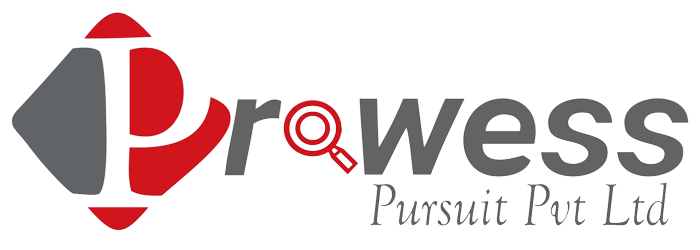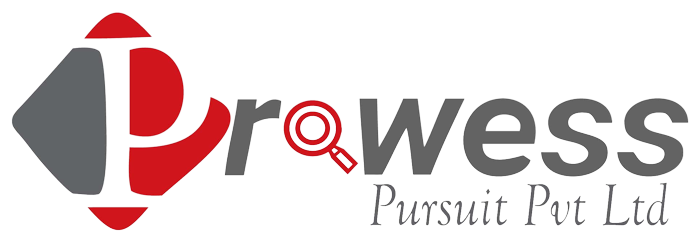
Working Visa Australia – Types, Processing Times, Cost
Are you an Indian citizen dreaming of launching your career in Australia? Australia, with its thriving economy and multicultural society, presents an exciting prospect for ambitious professionals like yourself. The key to unlocking this dream lies in securing an Australian Work Visa.
This comprehensive guide will equip you with all the essential information about Australian Work Visas for Indians. We’ll delve into the different visa types available, allowing you to find the perfect fit for your career goals. We’ll also shed light on processing times and associated costs, ensuring you’re well-prepared for the application process. By the end of this blog, you’ll have a clear roadmap to navigate your journey towards a fulfilling career Down Under.
What is a working visa Australia?
Australian Work Visas cater to overseas individuals with the skills and experience Australia seeks to bolster its workforce. By applying for this visa, you could be contributing to the country’s economic growth while building a fulfilling career Down Under.
There are two main pathways to consider under the umbrella of Australia Work Visas: Sponsorship by an Employer and Nomination through a skilled occupation. Let’s delve deeper and explore the exciting possibilities that await!
Types of Australia Work Visas
Australia, with its stunning landscapes, vibrant cities, and thriving job market, beckons skilled workers from around the world. If you’re an Indian citizen with your sights set on working in Australia, navigating the visa options can seem daunting. But fret not! This comprehensive guide will break down the different types of work visas available, helping you find the perfect fit for your skills and aspirations.
Temporary Work Visas: Filling In-Demand Roles
- Temporary Skill Shortage (TSS) Visa (subclass 482): This visa is ideal if you possess skills on Australia’s official Skilled Occupation List (SOL). Employers facing skill shortages can sponsor you for a temporary stay, allowing you to gain valuable Australian work experience. The TSS has three streams: Short-Term (up to 2 years), Medium-Term (up to 4 years), and Labour Agreement (specific terms outlined in a pre-arranged agreement).
Permanent Work Visas: Building a Future in Australia
- Skilled Independent Visa (subclass 189): This points-based visa is your gateway to permanent residency in Australia. It doesn’t require sponsorship from an employer or a state government. However, you’ll need a competitive score based on factors like age, English language proficiency, work experience, and qualifications. Your occupation must also be listed on the SOL.
- Skilled Nominated Visa (subclass 190): Similar to the Skilled Independent visa, the Skilled Nominated visa is points-based and leads to permanent residency. The key difference lies in sponsorship. Here, an Australian state or territory government nominates you, potentially boosting your application’s competitiveness. This visa is a good option if you’re open to living and working in a specific region of Australia.
- Employer Nomination Scheme (ENS) Visa (subclass 186): If you have a job offer from an Australian employer who recognizes your skills and is willing to sponsor you, the ENS visa is the way to go. This visa streamlines the permanent residency process, making it an attractive option for those with in-demand expertise.
- Regional Sponsored Migration Scheme (RSMS) Visa (subclass 187): Looking to contribute to Australia’s regional development? The RSMS visa is designed to attract skilled workers to designated regional areas. Similar to the ENS visa, it requires sponsorship from a regional employer and paves the way for permanent residency.
Working Holiday Visa: Adventure with a Side of Work
- Working Holiday Visa (subclass 417): Are you a young and adventurous soul (aged 18 to 30, or 35 for some countries) looking to explore Australia while supplementing your travels with some work? The Working Holiday visa is your perfect match. This visa allows multiple entries for up to a year (with potential extensions under certain circumstances) and lets you work for up to six months with one employer at a time.
Choosing the Right Visa: It’s All About You
The best work visa for you depends on your career goals, skillset, and desired lifestyle in Australia. Do you crave permanent residency and the chance to build a long-term future Down Under? Then a permanent work visa like the Skilled Independent or Employer Nomination Scheme might be ideal. Perhaps you’re drawn to the flexibility and adventure of travel combined with work – the Working Holiday visa could be your perfect fit.
Australia Work Visa Requirements: Your Essential Guide
To make the process smoother, understanding the visa requirements is crucial. This guide delves into the key aspects you, as an Indian citizen, need to consider when applying for an Australian work visa.
Age: The good news is there’s no strict upper age limit for most work visas in Australia. However, the minimum age is 18. While age itself isn’t a deciding factor, some occupations may have specific age limitations based on skill or experience prerequisites.
Qualifications and Experience: The educational qualifications and professional experience you need depend on the work visa category you’re applying for. Certain professions require skills assessments or registration before you can even submit a visa application. Make sure to thoroughly research the specific requirements for your desired field.
English Language Proficiency: Demonstrating your English language proficiency is a must for most work visa applications. The most common way to do this is by taking the IELTS (International English Language Testing System) test. However, there may be exemptions or alternative ways to provide evidence of your language skills in specific situations.
Health and Character: Meeting health standards is mandatory for all work visa applicants. This might involve a medical examination or a health declaration, depending on the visa type and the length of your intended stay. Additionally, you’ll need to meet character requirements, which usually involve police clearance certificates or similar documents from countries you’ve resided in for a specific period.
Sponsorship or Nomination: Some work visa categories require sponsorship or nomination by an approved employer, state/territory government agency, or regional authority. The sponsor or nominator has specific criteria and obligations they need to fulfill as set by the Australian government.
Financial Capacity: For certain work visas, you may need to demonstrate you have enough funds to support yourself and any accompanying family members during your stay in Australia. The financial requirements will vary depending on the visa category and the number of dependents you have.
Remember: Each work visa category has its own unique set of requirements. To ensure a smooth application process, it’s highly recommended that you consult the official Australian government websites (https://immi.homeaffairs.gov.au/) or seek professional advice from a registered migration agent. They can help you determine the specific requirements that apply to your individual circumstances and guide you through the application process.
How to apply for a work visa in Australia
This in-depth guide walks you through the process of applying for a work visa in Australia, making it easier for you to navigate the steps and chase your Aussie dream.
Understanding the Options: Finding the Right Work Visa
Australia offers a diverse range of work visas catering to different needs and professions. Here’s a breakdown of some popular categories:
- Employer Nomination Scheme (ENS) visa: This visa is sponsored by your Australian employer and requires a nomination from them.
- Temporary Skill Shortage (TSS) visa: Ideal for skilled occupations currently in high demand within Australia.
- Regional Sponsored Migration Scheme (RSMS) visa: This visa prioritizes regional areas of Australia and has specific requirements for working and residing in designated locations.
Remember, this is not an exhaustive list. Research the Department of Home Affairs website (https://immi.homeaffairs.gov.au/) to explore the complete range of work visa options and find the one that best aligns with your situation.
Getting Prepared: Essential Documents for Your Application
Once you’ve identified the most suitable visa category, it’s time to gather the necessary documents. Here are some common requirements, but always refer to the official guidelines for the specific visa you’re applying for:
- Valid passport: Ensure your passport has sufficient validity (usually six months beyond your intended stay in Australia).
- Certified educational certificates: Proof of your educational qualifications relevant to your nominated occupation.
- Work experience proof: Documents like employment contracts or reference letters demonstrating your relevant work experience.
- English language test results (if needed): Depending on the visa category, you may need to provide English language proficiency test scores (like IELTS or PTE).
- Skills assessment (if applicable): Some professions require a skills assessment from a designated assessing authority to verify your qualifications meet Australian standards.
- Health and character certificates: These certificates may be requested to ensure you meet health and character requirements.
- Proof of financial capacity: This demonstrates you have sufficient funds to support yourself during your stay in Australia.
Pro Tip: Don’t wait until the last minute to collect these documents. Start gathering them early to avoid delays in your application process.
Stepping into the Digital Age: Creating Your ImmiAccount
The Australian Department of Home Affairs utilizes an online ImmiAccount system for managing visa applications. Head to their website and create your ImmiAccount. This secure portal allows you to submit your application electronically, upload documents, and track the progress of your application.
Remember: Providing accurate information and creating a strong password are crucial for a smooth application process.
Filling Out the Application: Providing Accurate and Up-to-Date Information
Now comes the application itself! Log in to your ImmiAccount, select the chosen work visa category, and meticulously fill out the online application form. Double-check all details for accuracy – any discrepancies could lead to delays or even rejection.
Pro Tip: Save your progress regularly and proofread the application thoroughly before submitting.
Uploading Supporting Documents: Completing the Picture
Once you’ve completed the application form, it’s time to upload all the required supporting documents. Ensure each document adheres to the specified size and format requirements. Organize your documents logically for easy review by the immigration authorities.
Remember: Incomplete applications can be frustrating. Double-check that you’ve uploaded all the necessary documents before proceeding.
Paying the Visa Application Fee: Securing Your Spot
The next step involves paying the visa application fee using a valid credit or debit card. The fee amount varies depending on the specific work visa category you’re applying for. Keep a copy of your payment receipt for future reference.
Pro Tip: Factor in the application fee when budgeting for your move to Australia.
Submitting Your Application: Taking the Leap
After reviewing your application and uploaded documents one last time, submit it electronically through your ImmiAccount. You’ll receive an acknowledgment receipt confirming the submission. This signifies you’ve officially entered the processing queue.
Stay Calm: Processing times can vary, so be patient and avoid making travel arrangements until you receive a decision on your visa application.
Monitoring Your Application: Staying Informed
Following submission, regularly check your ImmiAccount for updates or requests from the Department of Home Affairs. They might require additional information or documentation to process your application further. Respond promptly to avoid delays in the assessment process.
Remember: Communication is key. Be responsive to any requests from the Department of Home Affairs.
Awaiting the Decision: Anticipation Builds
The processing timeframe for work visa applications can vary depending on several factors, including:
- The chosen visa category: Some visa streams are generally processed faster than others.
- The complexity of your application: Applications with straightforward qualifications and complete documentation tend to be processed quicker.
- The current workload of the Department of Home Affairs: Processing times can fluctuate based on overall application volume.
Here’s what you can do during this waiting period:
- Stay informed: Regularly check your ImmiAccount for updates. The Department of Home Affairs might request additional information, so be prepared to respond promptly.
- Gather additional documents (if requested): If the department requires further documentation, ensure you submit them within the stipulated timeframe.
- Consider seeking professional help: Registered migration agents can provide valuable guidance throughout the application process, including navigating complexities or potential delays.
Remember: Patience is key. While the wait can be nerve-wracking, focus on the exciting prospect of working and living in Australia.
The Outcome: Receiving the Decision
Once a decision has been made on your work visa application, you’ll be notified through your ImmiAccount. Here are the two possible scenarios:
- Visa Grant: Congratulations! You’ve been granted the work visa! This notification will outline the specific conditions attached to your visa, such as validity period and any work limitations.
- Visa Refusal: Unfortunately, your application may be unsuccessful. The notification will explain the reasons for the refusal and your right to apply for a review (if applicable).
Getting Rejected? Don’t Give Up!
A visa refusal doesn’t have to be the end of the road. Depending on the reason for rejection, you may be able to:
- Address the issues and re-apply: If the refusal stemmed from incomplete documentation or missing information, rectify the issues and re-submit your application.
- Seek professional guidance: Registered migration agents can analyze your situation and recommend the best course of action, including appealing the decision (if possible).
Remember: Don’t be discouraged. Research the reasons for refusal, address them accordingly, and explore your options for moving forward.
Australia work visa fees in Indian rupees
| WORK VISA CATEGORY | VISA APPLICATION FEE (AUD) | VISA APPLICATION FEE (INR) |
| Temporary Skill Shortage Visa | $1,265 | ₹70,580 |
| Employer Nomination Scheme | $4,045 | ₹2,25,692 |
| Skilled Independent Visa | $4,045 | ₹2,25,692 |
| Temporary Work (Short Stay) | $280 | ₹15,623 |
| Global Talent Visa | $4,110 | ₹22,9318 |
Working Visa Australia Cost – Other Considerations
The prospect of securing a work visa and embarking on an Australian adventure is exciting! But beyond the initial visa application fee, there are other financial considerations to factor in for a successful transition Down Under. Let’s delve into some key cost areas to keep your budgeting on track.
Health Insurance: This is mandatory for most work visa applications. The cost can vary depending on your age, health, and desired coverage. Research different providers and compare plans – finding one that fits your needs and budget is crucial.
Relocation Expenses: Moving to a new country involves costs like flights, shipping belongings, and temporary accommodation. Consider these factors and plan accordingly to avoid any financial surprises.
Accommodation: Housing costs differ significantly across Australia. Major cities like Sydney or Melbourne have higher rents compared to regional areas. Research rental markets in your chosen location to estimate average costs.
Transportation: Factor in your daily commute and any travel plans within Australia. Public transport options like trains, buses, and trams are readily available in most cities and offer cost-effective solutions. If you plan to buy a car, remember to budget for the car itself, registration, insurance, and ongoing maintenance.
Living Expenses: Groceries, utilities, dining out, entertainment – these everyday expenses add up. The cost of living varies depending on your lifestyle choices and city of residence. Research average prices and create a realistic budget that aligns with your financial situation.
Planning is Key: Remember, these costs come on top of the visa application fee. By carefully planning your finances and considering all these factors, you can ensure a smooth transition and focus on enjoying your Australian work experience.
Pro Tip: Explore resources offered by the Australian Government. Websites like https://www.pm.gov.au/our-work/cost-living-relief provide valuable insights into living expenses across different regions.
Remember: With thorough research, budgeting, and preparation, you can navigate the financial aspects of obtaining a work visa in Australia and turn your dream into reality!
Processing Time and Visa Decision: Understanding the Wait for Your Australian Work Visa Adventure
So you’ve submitted your application for a work visa in Australia – congratulations on taking that exciting first step! Now, the anticipation likely sets in as you wonder, “When will I hear back?” The processing timeframe for your Australian work visa application can vary, but this section will equip you with the knowledge to navigate the waiting period effectively.
Understanding Processing Timelines
The processing time for your work visa application can range anywhere from several weeks to several months. This variation depends on a few key factors:
- The Chosen Visa Category: Different visa streams have varying processing times. For instance, applications for Temporary Skill Shortage (TSS) visas might be processed faster compared to those for occupations with a longer assessment process.
- Application Completeness: A well-organized application with all necessary documents readily available generally progresses through processing quicker. Ensure you’ve meticulously reviewed the requirements for your specific visa category and double-checked your application for any missing information.
- Department Workload: The Department of Home Affairs experiences fluctuations in application volume. During peak periods, processing times might be slightly extended.
- Additional Requirements: Certain professions necessitate skills assessments or health checks. Completing these steps promptly can expedite the overall processing time.
What to Expect After Submission
Once you’ve submitted your application, here’s what you can expect:
- Communication is Key: Regularly check your email and your ImmiAccount for any updates or requests for further information from the Department of Home Affairs. Responding promptly to these requests can significantly impact the processing timeline.
- The Decision: Following the processing of your application, you’ll receive a decision via your ImmiAccount. This decision can be:
- Visa Grant: Congratulations! You’ve been granted the work visa – time to celebrate! The notification will detail the specific conditions attached to your visa, such as validity and work limitations.
- Request for More Information: In some cases, the Department might require additional information before reaching a final decision. Ensure you submit the requested documents within the stipulated timeframe to avoid delays.
- Visa Refusal: If your application is unsuccessful, the notification will explain the reasons for refusal and your right to appeal the decision (if applicable).
Remember, Patience is Your Ally
The waiting period can be nerve-wracking, but remember, a well-prepared application and clear communication go a long way. Utilize this time to research your new life in Australia, explore potential housing options in your chosen city, or connect with future colleagues.
Seeking Additional Support
For the most up-to-date and specific processing timelines for your chosen visa category, refer to the official Australian Department of Home Affairs website (https://www.homeaffairs.gov.au/). You can also consider consulting a registered migration agent who can provide personalized guidance throughout the application process and offer valuable insights into navigating potential delays.
By understanding the processing timeframe and different decision possibilities, you can approach the wait with a sense of calm and proactive preparation. With the right information and a positive outlook, you’ll be well on your way to embarking on your Australian work visa adventure in no time!
After Receiving the Australian Work Visa
Congratulations! You’ve secured your Australian work visa and are one step closer to embarking on your adventure in the Land Down Under. Now that the official hurdle is crossed, it’s time to focus on making a smooth transition and thriving in your new home. Here’s a helpful guide to navigate the initial post-visa stages:
Understanding Your Visa Conditions:
- Read the Fine Print: Your visa comes with specific conditions outlining the permitted work type, any limitations on work hours, and potential regional restrictions (if applicable). Familiarize yourself with these details to ensure compliance throughout your stay.
Knowing Your Rights:
- Empower Yourself: As a work visa holder, you’re entitled to fair treatment at work, minimum employment standards, and a safe work environment. Researching Australian employment laws empowers you to understand your rights and advocate for yourself if needed.
Accessing Healthcare:
- Plan for Wellbeing: Having health insurance ensures access to essential healthcare services in Australia. Depending on your visa subclass and origin country, you might be eligible for Medicare, the public healthcare system. Explore healthcare options and fulfill any specific health insurance requirements.
Taxation and Your TFN:
- Paying Your Share: Working in Australia means obtaining a Tax File Number (TFN) – your unique tax identification number. Apply for a TFN with the Australian Taxation Office (ATO) upon arrival. Understanding and complying with Australian tax laws ensures you fulfill your tax obligations.
Banking and Financial Matters:
- Managing Your Finances: Open a bank account in Australia to manage your finances and receive salary payments conveniently. Research different banks and their offerings to find a suitable one. Bring the required identification documents when opening your account.
Settling into Australian Life:
- Embrace the Culture: Moving to a new country comes with adjustments. Take time to understand the local culture, customs, and lifestyle. Explore resources like community groups, orientation programs, and online forums to build a support network and ease the transition.
Finding Employment (if needed):
- Job Search Strategies: If you haven’t secured a job yet, leverage online job boards, networking events, and recruitment agencies to find suitable opportunities. Remember to adhere to your visa work conditions and inform potential employers about your visa status.
Remember: Reliable information is key. Don’t hesitate to consult official government websites, or seek guidance from registered migration agents or immigration lawyers if you have specific questions or require further assistance.
By following these tips and staying informed, you’ll be well on your way to settling in, securing employment (if needed), and making the most of your Australian work visa experience. Remember, this is your chance to explore a new country, build a fulfilling career, and embrace the vibrant Australian life!
Conclusion: Your Australian Dream Within Reach
Working in Australia can be an enriching and life-changing experience. This comprehensive guide has equipped you with the knowledge and steps to navigate the work visa application process in Australia. From identifying the right visa category to submitting your application and understanding potential outcomes, you’re now better prepared to turn your dream of working Down Under into a reality. Remember, with thorough preparation, attention to detail, and a bit of patience, you can secure your Australian work visa and embark on this exciting chapter in your life.
FAQs
Who is eligible to work in Australia?
Australian work eligibility varies based on visa type. Generally, those with relevant skills, qualifications, and job offers from Australian employers are eligible.
Can I work in Australia without IELTS?
English language proficiency is often required for Australian work visas. While IELTS is a common way to demonstrate this, alternative tests or exemptions may apply depending on the visa category and your circumstances.
Is Australian PR difficult?
Obtaining Australian Permanent Residency (PR) can be challenging, but it’s achievable through various pathways such as skilled migration, family sponsorship, or employer nomination. The difficulty depends on individual qualifications, occupation demand, and visa subclass.
Can I get a job in Australia from India?
Yes, it’s possible to secure a job in Australia from India, especially in fields with high demand for skilled workers. Networking, applying through job portals, and utilizing skilled migration programs are common ways to find employment opportunities.
What is the age limit for an Australian visa?
Age limits vary among visa subclasses. Some visas have no age restrictions, while others may have age requirements or points awarded based on age. Consulting official immigration resources is crucial for accurate information.
What is the cost of a work visa for Australia?
The cost of an Australian work visa depends on the visa subclass and applicant circumstances. It includes application fees, health assessments, biometrics (if required), and other associated expenses. Exact fees can be found on the Department of Home Affairs website.
How do I get PR in Australia?
Permanent Residency in Australia can be obtained through various pathways such as skilled migration, family sponsorship, or employer nomination. Meeting eligibility criteria, including skills assessment, language proficiency, and other requirements, is essential.
Can I move to Australia without a skill?
While having skills and qualifications can enhance your chances of migrating to Australia, other pathways such as family sponsorship, investor visas, or certain humanitarian programs may not require specific skills.
What is the easiest visa to work in Australia?
The easiest visa to work in Australia depends on individual circumstances and qualifications. Temporary Skill Shortage (TSS) visa and Working Holiday visa are popular options, but eligibility criteria vary.
How do Indians get an Australian visa?
Indians can apply for an Australian visa online through the official website of the Department of Home Affairs or by visiting the nearest Australian embassy or consulate. The application process involves submitting required documents and fulfilling eligibility criteria.
Which visa has no age limit in Australia?
Some visas, like the Subclass 186 Employer Nomination Scheme (ENS) visa or the Subclass 187 Regional Sponsored Migration Scheme (RSMS) visa, have no age limit for applicants.
What is the easy way to go to Australia?
The easiest way to migrate to Australia depends on individual circumstances. Skilled migration programs, employer sponsorship, or family visas are common pathways. Researching visa options, assessing eligibility, and seeking professional advice can simplify the process.




